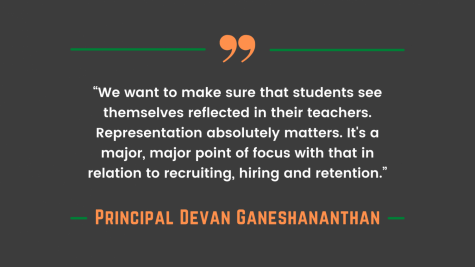Diversity
June 14, 2021
With ASL classified as an international school, Schabel said this premise brings people from a variety of different backgrounds together. Through exposure to a wide range of environments, she said students gain a stronger perception of how peoples’ experiences vary and shape their understanding of the world.
“It’s really an advantage to have lots of different perspectives, people coming from all over the place,” Schabel said. “It’s a privilege to be able to just learn with all these different people and hear about their stories.”
Additionally, Ganeshananthan said diversity can take many forms depending on the context, and within an international school like ASL, “people will have a proclivity to really take a look at what is most apparent, which is racial diversity, or perhaps gender diversity.”
While Ganeshananthan said he acknowledges the community’s lack of racial diversity, he said it is not the sole attribute of a diverse population, and the school has diversity in other areas, such as nationality.
“The level of racial diversity is not nearly what it was in the previous schools that I’ve worked, but then there are also different types of diversity here that were absent from other schools that I’ve worked in,” he said.
Similarly, World Languages and Cultures Teacher Annie Yousey said the school community has a wide variety of diverse backgrounds in comparison to working at Korea International School – KIS – for five years.
“There is a lot more diversity as far as the different countries that are represented and different people that are from different places,” she said.
Blanks, who was recently elected as one of the new co-presidents for the Social Justice Council, said the school lacks diversity not in the actual population, but in its execution of discussion when conversations pertain to social justice. Nevertheless, she said in attempting to develop the diversity program, the community is taking steps forward.
“The effectiveness of things like the anti-racism program in advisories and like all these different programs that try and incorporate other aspects of the identifiers is debatable,” she said. “But that effort – like in the emphasis of trying to expose the students to these things – is very important and unique.”
Additionally, Ganeshananthan said the school aims to hire faculty the student body can feel represented by, such as teachers of color or women teaching more advanced math and science courses.
“We want to make sure that students see themselves reflected in their teachers,” he said. “Representation absolutely matters. It’s a major, major point of focus with that in relation to recruiting, hiring and retention.”
Nevertheless, Ganeshananthan said hiring committees prioritize finding the best-suited educator for the school.

Waltz said ASL differs from the other schools he has taught at in terms of its openness to diversity. However, Waltz said the change has made him reconsider working in a private school because he is not presented with the same opportunities to help students.
In the public system, Waltz said schools often need to be more accepting of racial diversity, and he can contribute more directly to that change “through racial justice issues or promoting safe, inclusive curriculum and education or student groups.”
Despite the benefits of private school education, Waltz said overall he prefers teaching in a public school system because of the impact he can have on students from a variety of backgrounds.
“[Public schools] are incredibly imperfect, but I feel like I have a really strong sense of a wider purpose there – working with students from backgrounds that are incredible or unfortunate … and being the best teacher for everybody,” he said.
Ultimately, Waltz said he has decided to return to the U.S. at the end of the school year in order to pursue his passion for teaching in public education systems and search for environments where he can have a greater influence as a voice of change.
“I do know that the communities that I will most likely be working in tend to skew a little less progressive than ASL and London, and those are the only types of communities I’ve worked in prior to working here, and so I have a stronger sense of how to provide safety to students who may be afraid to ask,” he said.

